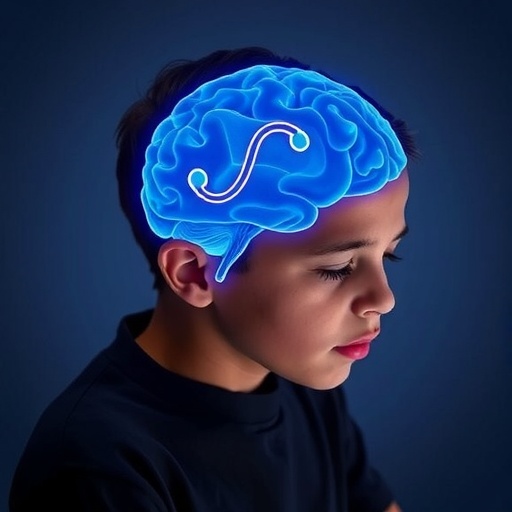The challenges faced by young people with anorexia nervosa are profound and can often permeate every aspect of their lives. Anorexia nervosa is a complex and serious mental health condition characterized primarily by restrictive eating patterns, an intense fear of gaining weight, and a distorted body image. Recent research published in the Journal of Eating Disorders sheds light on the implications of olanzapine, an antipsychotic medication, in the treatment of this debilitating condition, especially among younger patients and their families. The OPEN feasibility trial provides crucial insights into this relatively underexplored aspect of treatment for anorexia in the adolescent population.
The findings from the OPEN feasibility trial, led by researchers including Olive, Kellermann, and Said, explore not just the clinical implications of olanzapine but also dive deep into the personal narratives of the young individuals undergoing treatment. Understanding what olanzapine means to these patients and their families is pivotal in shaping a holistic approach to treatment. Medication adherence often hinges on a patient’s perception and understanding of its purpose, making qualitative insights as valuable as quantitative data.
During the trial, participants reported varied experiences with olanzapine. Some noted improvements in mood and a greater willingness to engage with treatment plans, suggesting the medication’s potential benefits in addressing the psychological aspects of anorexia nervosa. Participants described feelings of increased clarity and a reduction in overwhelming anxiety, allowing them to focus more on recovery instead of being consumed by fears related to food and body image. These subjective experiences are vital as they highlight the multifaceted nature of anorexia and the importance of addressing mental health beyond nutritional rehabilitation.
From the perspective of families, the fear and helplessness that accompany a loved one’s struggle with anorexia can often lead to an overarching sense of despair. However, the introduction of olanzapine gave some families renewed hope. Many parents reported observing their children becoming more engaged and communicative, indicating that the medication may serve as a facilitator for deeper therapeutic conversations about food, body image, and self-worth. This shift in behavior underscores the importance of medication in fostering a supportive home environment conducive to recovery.
Exploring the mechanism of action for olanzapine sheds further light on how it might aid young people grappling with anorexia nervosa. While primarily classified as an atypical antipsychotic, olanzapine has shown efficacy in mitigating anxiety and mood disorders, which are often comorbid with eating disorders. By effectively managing these underlying issues, olanzapine may indirectly support patients in addressing their eating behaviors and perceptions of self, outlining a more comprehensive pathway to recovery.
The role of olanzapine is further complicated by the societal pressures and stigmas surrounding mental health and eating disorders. Young individuals frequently navigate a landscape saturated with unrealistic body standards and diet culture, which can impact their acceptance of medication as part of their treatment plan. During the trial, discussions around the stigma associated with taking psychiatric medications were pivotal. Participants often expressed concern about appearing ‘weak’ or being judged by peers for needing medication, highlighting a gap that needs addressing through education and supportive community dialogue.
The OPEN feasibility trial’s design allowed for a robust assessment of both quantitative outcomes, such as weight gain and psychological assessments, and qualitative data derived from interviews with participants. This mixed-methods approach is increasingly recognized for its ability to yield rich insights into patient experiences. The qualitative findings demonstrate that how young people perceive the benefits and side effects of the medication directly correlates with their overall treatment satisfaction and willingness to continue with their recovery journey.
Despite the positive feedback on olanzapine’s impact from some participants, comprehensive discussions regarding potential side effects were also critical during the trial. Common concerns included weight gain, sedation, and metabolic effects, which are particularly relevant for young patients who are acutely sensitive to bodily changes. The researchers emphasized the importance of aligning treatment plans with patient concerns, as a perceived lack of agency can lead to resistance against prescribed therapies, including medication.
However, it’s worth noting that the research is not without its limitations. The sample size of the OPEN feasibility trial, while a significant step forward, was limited, and further research is necessary to establish more definitive conclusions regarding the long-term efficacy and safety of olanzapine for young individuals with anorexia nervosa. The need for larger-scale, multicentric studies is evident to validate these initial findings across diverse populations and settings.
As healthcare providers ponder the implications of the findings, the research emphasizes that treatment for anorexia must extend beyond a one-size-fits-all approach. Individualized treatment plans that take into account the unique psychological landscapes of young patients are essential. Addressing the overlapping issues of anxiety, depression, and social pressures through pharmacological interventions like olanzapine, when integrated into a therapeutic framework, seems to present a promising avenue for mitigating the impacts of this brutal disorder.
In conclusion, the findings from the OPEN feasibility trial could change the landscape of anorexia nervosa treatment for adolescents. As healthcare professionals begin to embrace a more nuanced understanding of the complexities surrounding eating disorders, integrating medication like olanzapine into treatment regimens could prove vital in reshaping the narrative surrounding recovery. By amplifying the voices of young people and their families, we can foster a more supportive and understanding approach to mental health, paving the way for a future where recovery is not just possible but probable.
This study serves as a clarion call for the medical community to re-evaluate and revitalize treatment strategies for anorexia nervosa. Olanzapine’s role is undoubtedly significant, but it is the shared experiences of those affected that should guide how we move forward in addressing this challenging illness. The journey toward recovery in the complex world of anorexia nervosa will undoubtedly require collective efforts, compassion, and unwavering dedication to understanding the experiences of young patients and their families.
Subject of Research: The effects of olanzapine in young people with anorexia nervosa and their families.
Article Title: What does taking olanzapine mean to young people with anorexia nervosa and their families? Findings from the OPEN feasibility trial.
Article References:
Olive, R.R., Kellermann, V., Said, O. et al. What does taking olanzapine mean to young people with anorexia nervosa and their families? Findings from the OPEN feasibility trial.
J Eat Disord 13, 228 (2025). https://doi.org/10.1186/s40337-025-01401-z
Image Credits: AI Generated
DOI: 10.1186/s40337-025-01401-z
Keywords: anorexia nervosa, olanzapine, mental health, young people, eating disorders, OPEN feasibility trial.
Tags: adolescent anorexia nervosa managementantipsychotic medication and eating disorderschallenges of anorexia nervosa in youthholistic approach to anorexia treatmentimpact of olanzapine on young patientsimplications of olanzapine for families of patients.mental health medication adherenceOlanzapine treatment for anorexia nervosaOPEN feasibility trial findingspersonal narratives in mental health treatmentqualitative insights in treatmentunderstanding patient perceptions of medication





